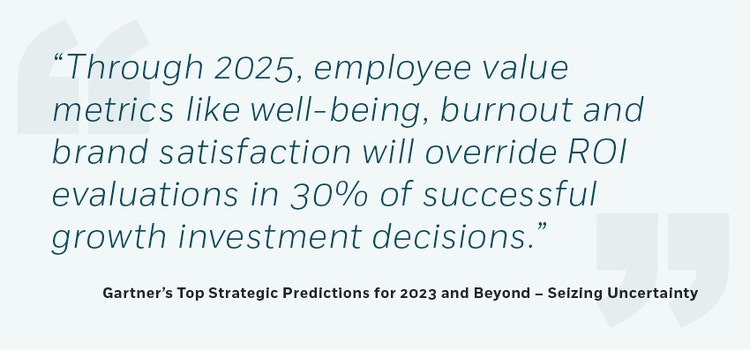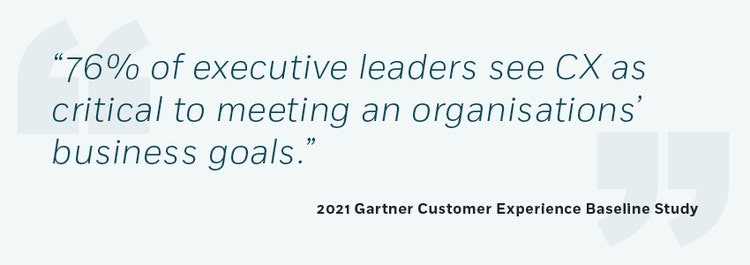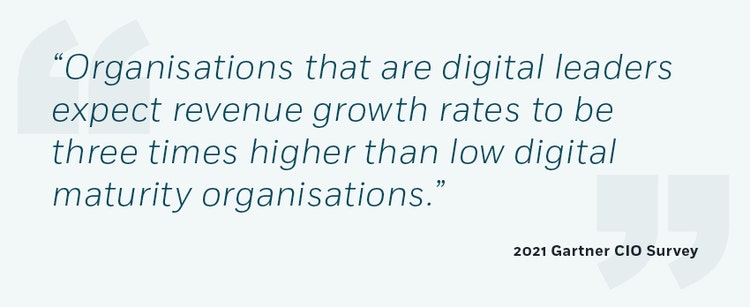
Insights
Five insights from the 2022 Gartner IT Symposium
Kumaran CR, Consulting Practice Lead, ANZ – UST
The recent Gartner IT Symposium Xpo set out some of the digital and tech trends and priorities for organisations in the years ahead.

Kumaran CR, Consulting Practice Lead, ANZ – UST
Kumaran CR has led strategic and digital business transformation initiatives for multiple industries, including CPG and retail organisations in the U.S. and APAC regions over the last 17 years.
When the future is uncertain and the way ahead unclear, a reliable guide becomes even more essential.
For years, organisations have relied on Gartner’s research and predictions to inform future strategies and plan for the year(s) ahead.
So, with 2023 just a couple of calendar pages away, now seemed a good time to reflect on some of the insights and themes from the recent 2022 Gartner IT Symposium/Xpo on the Gold Coast that resonated strongest with me.
Employee experience is the new battleground

The war for talent has only grown fiercer – particularly for the high demand digital skills necessary to maintain a competitive edge in emergent technologies. Gartner predicts that, by 2025, 40% of organisations will report a material business loss due to volatility in the labour market, and that this will force a shift in talent strategy from acquisition to resilience.
Employee acquisition and retention might seem like an HR challenge rather than an IT one. However, a key driver for both is the employee experience, which is largely the product of the systems, process and technologies employees work with.
The COVID lockdowns highlighted how small inefficiencies or seemingly trivial impositions in digital workflows can quickly grow into lost productivity, greater confusion and frustrated employees.
Hybrid work is here to stay. So, while some employers debate the benefits of physical in-office collaboration with their employees, others are beginning to reimagine the workspace as a truly hybrid environment where virtual participants aren’t made to feel like second class citizens.
Gartner predicts that fully virtual workspaces – incorporating VR to create immersive and interactive experiences for both physical and virtual team members – will redefine our idea of the office by 2027. Fully virtual workspaces are expected to account for 30% of investment growth in metaverse technologies over the next few years.
Human-centred design is more important than ever

Just as employee experience (EX) has become a priority, Gartner’s research reveals that organisations with an effective customer experience (CX) strategy were less impacted by revenue loss during the pandemic years.1
To be truly effective, both EX and CX rely on human-centred design. While technology platforms are important, deriving value from these investments requires a deep understanding of human needs and behaviours.
Digital maturity requires continuous transformation

Economic instability and an unpredictable world have seen CEOs deprioritise growth going into 2023. Growth remains a priority for only 39% of CEOs, down 12% on the previous year and 17% since the start of the pandemic.2
However, the 2021 Gartner CIO survey revealed that those organisations leading the way in digital maturity are seeing three times the growth rate of low maturity organisations.3
Greater resilience and sustainable growth are still possible for those organisations willing to unlock greater value from their IT departments and explore new digital avenues.
The most successful organisations have already adopted this mindset of continuous digital transformation, solving business problems by digitising more business functions – such as implementing AI to improve the customer experience.
The shifting responsibility and accountability for IT
One theme that cropped up throughout the conference was that CIOs need to take a bigger role in shaping the future of their organisations.
For a long time, many organisations treated IT as an overhead rather than an opportunity. The IT department actioned requests, managed infrastructure and maintained systems. If marketing asked for something, IT built it.
These days, what was once almost exclusively an IT concern has become a C-suite or board discussion. Whether the question is how to improve customer experience, reduce energy usage or improve resilience, IT is increasingly likely to be a major part of the answer.
But the feedback in many sessions was that too many CIOs continue to view their role as transactional rather than strategic. When reporting to the board, CIOs usually present what IT has done – projects completed, technologies implemented and perhaps what the current release roadmap looks like – with little proactive vision on how IT could better support or even drive the board’s priorities.
Executives and boards need their CIOs to lead these IT discussions and decisions, proactively presenting the opportunities while taking greater responsibility for the business value derived from digital projects.
Sustainable growth means constantly rethinking operations

Another theme from the event was that successful organisations are also extracting a greater return from their investments by optimising value chains and enabling cost takeouts.
Every time an organisation increases its revenue, it needs to invest in restructuring and rethinking parts of the business to ensure that revenue growth is sustainable. With digital teams increasingly responsible for revenue growth, this means ensuring reliability and scalability.
In short, sustainable growth is about continually looking for ways to achieve more from less.
Revolutionary work: Using technology to take the friction out of work, increasing AI automation and experimenting with emergent technologies.
Responsible investment: More value can be extracted from IT investment by using digital technology to reduce energy usage, investing in intelligent connected infrastructure,
Resilient cybersecurity: Business growth often means a bigger attack surface, with more data to protect and more endpoints to secure. Cybersecurity needs to be constantly reviewed and revised to stay ahead of future threats.
Conclusions
Some of these trends may not be that surprising. Digital transformation is nothing new. Given recent events, the importance of employee experience may be new but not that surprising.
However, the lightbulb moment for me was how much of the digital maturity of an organisation depended not on the board or the executive – they’re already taking greater responsibility for IT – but on the CIO.
For continuous digital transformation to succeed, for organisations to achieve sustainable growth and maintain a competitive edge, the CIO needs to be willing and able to take a bigger part in shaping the organisation’s future vision.